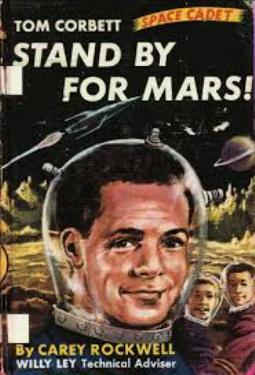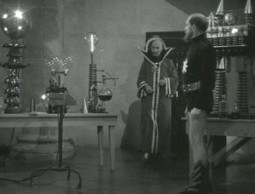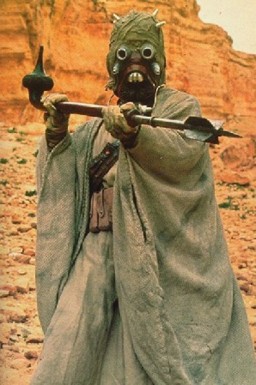What Old Futures Can Tell Us About Worldbuilding

I was taking a look at Stand by for Mars!, the first of the classic 1950s Tom Corbett Space Cadet Adventures, and this passage stood out like a sore thumb:
Speaking into an audioscriber, a machine that transmitted his spoken words into typescript, he repeated the names of the candidates as they passed.
And later
…he picked up the audioscriber microphone and recorded a brief message. Removing the threadlike tape from the machine, he returned to the house and left it on the spool
Bit of background. It’s the year AD whatever. In the first excerpt, somebody is recording the arrival of candidates for the Space Academy. In the second excerpt… actually I have no idea what’s happening. I bounced halfway through the first chapter, not because of the retro future, but because I didn’t much care for standard issue school stories where the personality clashes weren’t tied to wider issues and themes — JKR did it better. However, it’s the retro future I’m interested in here.
Let’s think about the audioscriber.
On the one hand, it represents a pretty good prediction of technical capabilities:
- “a machine” – This is something that sits on a desktop, not a massive computer with databanks and that thing with two wires that sparks fly up.
- “that transmitted his spoken words into typescript” – The machine recognises the spoken word.
- “typescript… spool” – The machine prints the results.

Now, we in the real 21st century may not wear silver-lamé jumpsuits or ride around with rocket packs. Even so, this quite disposable mid-20th century book does correctly predict our technical capabilities:
- We do have powerful machines that sit on our desktops.
- We do have speech recognition (a friend of mine who works in the field thinks it will be standard within a few years).
- We do have the ability to print words locally.
However, were we to emulate the Tom Corbett experience, we would install something like Dragon on a powerful laptop and connect it to a printer. Of course, we wouldn’t actually use the printer except to perhaps print off a list to hand around (“Anybody not on the rosta?”). Instead, we’d email the resulting list to somebody. Or, more likely, the names would already be in a college database and we’d be just confirming arrivals.

That’s what’s missing from this and most pre-modern SF — not the technical capabilities themselves, but the way they manifest. Specifically:
Our technologies are multi-purpose, often in the same device. If we have computing power, we can run both speech recognition and database on the same machine. If we have 3D printers, we use them to print both toys and weapons. Eye-reading technology that helps severely disabled people control their homes also goes into targeting systems.
Our technologies are synergistic (sorry to have to use the word). We can, for example, combine the database with (increasingly good) facial recognition.
Our technology is networked. No need to physically visit a computer or — as in this example — transfer information by hand. We can remotely operate sensors and weapons.
Our technology is consistent. If we have speech recognition, then we also have databases, and the capability to directly transfer information from one to the other. If we have powerful computing, then we can and will use it in everything from toys, civilian transport, all areas of industry, and military devices. If we have assault rifles and satellite phones, then expect to find them in the hands of fighters in the most obscure corners of the globe. Tusken raiders? Wot? No blaster and communicator?
Where it can be, technology will be automated. If we have speech recognition, then we have automated eavesdropping. If we have sensors and computers, then we have automated anti-sniper and counter battery devices.
Once established, a technology is convenient. Nobody messes around with ticker tape printouts! And, actually, we don’t have memory “cubes” either since sticks are easier to handle.
If a modern technology is not multi-purpose, synergistic, networked, consistent, automated, and convenient, then there has to be a reason why not. Needless to say, most “old” Science Fiction and almost all modern media SciFi fails this test.
For example, the Star Trek tricorder and the communicator should be the same device, should continuously upload to the Enterprise’s computer, and that device would be a semi-autonomous drone beamed down well before humans do. And while we’re at it, my son Kurtzhau points out that Star Fleet should have a Killer class warship equipped solely to beam warp cores into proximity with enemy ships.
Remember that recent bank heist episode of Dr Who? The hi-tech future space bank had worse security than a modern bank would. No cameras in corridors, for a start, and the security details appeared equipped for the Falklands War. And, how about Halo? All that technology and poor Master Chief doesn’t have night vision as standard. And so on.
I suspect this test applies to all technology, ancient and modern.
Take gunpowder.
In its heyday, it was used for everything from entertainment to weapons (multipurpose); combined with other technologies, for example warships delivering ship-to-shore bombardment (synergistic); used in a coordinated way, e.g. volley firing by musketeers, or fireworks set off to make displays (networked); appeared almost everywhere and did so quite rapidly over a couple of centuries (consistent); from as early as the 17th century people experimented with self-reloading firearms and landmines (automated); and firearms were quickly optimised to be easy to handle and use (convenient).
So that’s what old futures teach us about world building. It’s not so much technical inventions that matter as how humans exploit and connect them. If it can be done, it will be done by somebody somewhen, and a robustly built fictional world will reflect this.
M Harold Page (www.mharoldpage.com) is a Scottish-based author and swordsman with several Historical Adventure books in print. His creative writing handbook, Storyteller Tools: Outline from vision to finished novel without losing the magic is available on Amazon.
Good point. However, these examples are all looking backwards and pointing out where writers were unable to predict connections between technology.
Perhaps it’s not a failing at their end, but something that is actually fiendishly difficult. Does anyone ever get such things right, and can we expect it from writers at all?
Actually I think the writer did rather well at the basic tech. My point is that if you invent a technology, then you have to assume that humans will exploit it to its limit and beyond.
[…] last week I talked about how old Science Fiction and most media SciFi fails to portray realistic futures. […]